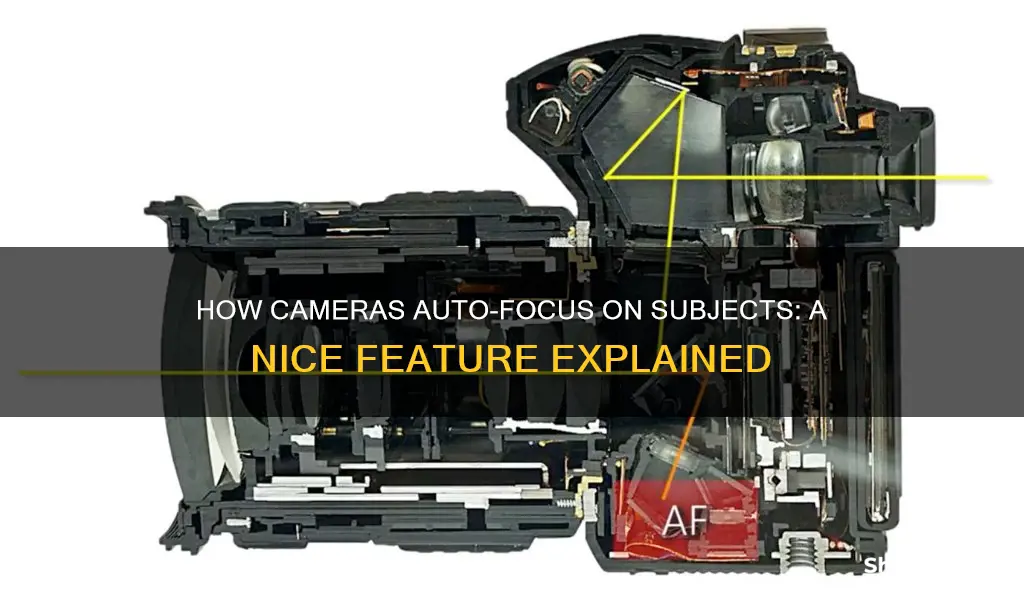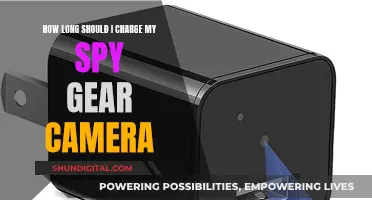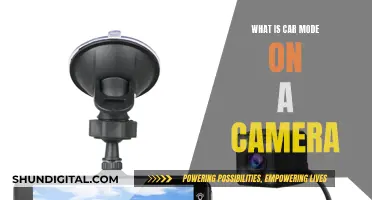
Modern cameras are equipped with advanced autofocus systems that can be hard to understand. Autofocus systems have improved over the last decade, with even the cheapest cameras now being able to automatically scan a scene and identify the subject. Some cameras can even perform face and eye detection, using artificial intelligence and machine learning to predict and calculate subject movement.
Autofocus systems rely on the presence of areas of high contrast for focusing. If you try to focus on a blank white wall or a plain blue sky, the autofocus system will try a few times and then give up. This is because there are no transitions that the camera can use to evaluate focus accuracy.
There are two types of autofocus (AF) systems: Active and Passive. Active AF works by shooting a red beam at the subject and then bouncing that light back to calculate the distance between the camera and the subject. Passive AF, on the other hand, uses Phase Detection or Contrast Detection to detect contrast.
Most modern DSLR and mirrorless cameras come with several types of autofocus systems that rely on different software and hardware. Phase Detection AF, for example, uses an array of microlenses for focusing, while Contrast Detection AF relies on software algorithms that probe through areas of an image for edge detail.
Overall, understanding how autofocus works is key to getting sharp, usable images each time.
| Characteristics | Values |
|---|---|
| Camera's autofocus system | intelligently adjusts the camera lens to obtain focus on the subject |
| Inner workings of autofocus | not as straightforward as it seems |
| Autofocus sensors | the real engine behind achieving accurate focus |
| Autofocus processor (AFP) | makes a small change in the focusing distance |
| Active AF | emits a signal to illuminate or estimate distance to the subject |
| Passive AF | uses contrast sensors within the camera |
| Phase detection | divides the incoming light into pairs of images before comparing them |
| Contrast detection | the camera commands the focus element of the lens to move while it reads any decrease in the intensity of light on a pixel or group of pixels |
| Focus modes | single-servo, continuous-servo, auto-servo |
| Autofocus area modes | single-point, dynamic, 3D tracking, group-area, auto-area |
What You'll Learn

Active vs Passive Autofocus
There are two types of autofocus (AF) systems: Active and Passive. Active AF systems work by projecting a red beam of light onto the subject, then bouncing that light back to the camera to calculate the distance between the camera and the subject. The camera then instructs the lens to adjust its focus based on this information. Active AF can be used in low-light environments and with stationary subjects, but it only works with close subjects.
Passive AF systems, on the other hand, do not rely on a red beam to determine the distance to the subject. Instead, they use "Phase Detection" or "Contrast Detection" (or a combination of both) to detect contrast. Phase Detection AF is faster and ideal for tracking fast-moving subjects, while Contrast Detection AF is generally slower but more reliable in low-light conditions. Some cameras combine both Phase and Contrast Detection AF to take advantage of their strengths in different environments, known as Hybrid AF.
Active AF systems are less common today, but they were used in the early days of autofocus technology. Passive AF is now the choice of the vast majority of cameras.
Camera B500 Charging: Cable or No Cable?
You may want to see also

Phase Detection vs Contrast Detection
Phase detection autofocus is very fast and good at tracking moving subjects. This is because it doesn't require much computational work from your camera. However, it is more prone to errors and internal misalignment issues. Some cameras let you calibrate your phase detection system to minimize errors.
Phase detection occurs any time you autofocus via the viewfinder on a DSLR camera.
Contrast detection autofocus requires your camera to process more data, which means it generally takes longer to lock focus. As a result, it isn't good at tracking moving subjects. However, contrast detection does tend to be more precise since the autofocus system is directly measuring the data from your camera sensor. This is good when your subject isn't moving as fast, like in landscape photography.
Contrast detection occurs any time you autofocus via the rear LCD screen on a DSLR camera.
Some cameras use a hybrid of the two systems. For example, a digital single-lens reflex (SLR) camera may use contrast detection autofocus in Live View or movie mode and phase detection autofocus when you look through the viewfinder.
Phase detection:
- Very fast
- Good for tracking moving subjects
- Prone to errors and internal misalignment issues
- Can be calibrated to minimize errors
- Occurs when you autofocus via the viewfinder on a DSLR
Contrast detection:
- Requires more data processing
- Generally takes longer to lock focus
- More precise
- Not good for tracking moving subjects
- Occurs when you autofocus via the rear LCD screen on a DSLR
Charging Camera Batteries: Using the Right Charger
You may want to see also

Continuous vs Single-Servo Autofocus
Single-servo autofocus and continuous autofocus are two of the main autofocus modes available on most professional cameras. They are also known as single autofocus and continuous autofocus, respectively.
Single-servo autofocus is ideal for static scenes or subjects that are not moving. When you press or half-press the shutter button, the camera will focus on the subject once and lock that focus until you take your finger off the button or capture the image by fully pressing the shutter button. This mode is useful when motion is not a factor and when you are shooting with a significant depth of field.
Continuous autofocus, on the other hand, is designed for capturing moving subjects. In this mode, the camera continuously adjusts the focus to keep the subject sharp, even if the subject or the photographer are moving. It does this by continually checking the distance between the camera and the subject and predicting the subject's movement based on previous results. This mode is particularly useful when shooting at super-shallow apertures or when very close to the subject, as even slight movements can cause the subject to go out of focus.
Different camera manufacturers have different names for these autofocus modes. Canon calls single-servo autofocus "One Shot AF" and continuous autofocus "AI Servo AF". Nikon refers to them as AF-S and AF-C, respectively, while Sony uses the terms Single-Shot AF and Continuous AF.
Recharging Camera Batteries: Efficient Nightly Routine
You may want to see also

Autofocus Area Modes
Autofocus (AF) area modes help fine-tune how and where the camera seeks to focus within a scene. The best way to nail your autofocus and take sharper photos is to choose the right focus point for a given setting and subject.
Single-Point AF Area Mode
Single-Point AF Area mode allows you to select a single focus point for static elements within the scene. As long as you keep the subject framed over this point and are using AF-C, the camera will automatically adjust the focus to keep the sharpness of the image.
Dynamic AF Area Mode
Using Dynamic AF Area mode, once you’ve manually selected your focus point, if the subject moves, your camera uses the selected point, as well as the surrounding points, to keep the subject sharp. To do this, you only have to keep your focus button pressed, and your camera will continue focusing.
Group AF Area Mode
Group AF area mode allows you to select a specific autofocus area with a small number of autofocus points to focus on rather than with a single point. Group AF area mode ensures autofocus accuracy when a single AF point isn’t enough, but you still want to pick out a particular subject/zone.
Auto AF Area Mode
Auto AF Area mode is completely automatic. This is the best focus area mode for letting the camera decide which focus points to use for a given scene. The main difficulty with the Auto AF area mode is that the camera has the most control over which part of the scene it deems important. For instance, a moving object in the background may be given more weight over a static subject in the foreground.
Polaroid Camera Battery Guide: Which Batteries to Use?
You may want to see also

Manual Focus vs Autofocus
The autofocus function in cameras is a comparatively new invention, first appearing on the market in 1977. However, most modern cameras are now equipped with autofocus systems, which are often hard to understand. This article will explain the differences between autofocus and manual focus, and outline the advantages and disadvantages of each.
Autofocus
Autofocus allows the camera to set the focal point, handling most of the work in ensuring a clear shot. The camera system drives a motor to move elements in the lens to change focus. The speed of autofocus varies depending on the camera and lens type. Sports-oriented equipment is typically much faster. Autofocus has seen advancements such as tracking, enabling it to lock focus on a subject and track it through the frame. This feature is particularly useful for capturing moving subjects.
Manual Focus
Manual focus enables the user to set the focal point, providing more creative control over the image. It offers greater creative control as the user determines the focus point. This method is ideal for situations where autofocus may struggle, such as low light conditions or taking shots through glass or fences. Manual focus is generally far slower than autofocus, performing poorly when dealing with moving objects.
When to Use Autofocus
Autofocus is generally very fast and accurate, making it ideal for capturing moving objects, such as in sports or wildlife photography. It is also useful in situations where the contrast is low, such as in heavy backlight, or when there are many objects in the scene, which can confuse the autofocus system.
When to Use Manual Focus
Manual focus is ideal for situations where autofocus struggles, such as in low light conditions, or when there are foreground distractions. It is also useful for macro photography, where the autofocus system finds it difficult to determine the object of focus, and for landscape photography, where a specific (hyperfocal) distance needs to be targeted.
The choice between autofocus and manual focus depends on the individual photographer's needs and shooting conditions. While autofocus is generally the better option, there are times when manual focus is preferable, especially when dealing with high magnifications, low light, foreground distractions, and more.
Unlocking Camera Raw: Manual Update Guide
You may want to see also
Frequently asked questions
Camera autofocus systems use a motor to adjust the lens to obtain focus on the subject, resulting in a sharp photo.
Autofocus systems use a motor in the camera or lens to focus on a subject. You simply press a button on your camera, and it will focus on your chosen subject.
There are two types of autofocus systems: Active and Passive. Active AF systems use a red beam to calculate the distance between the camera and the subject. Passive AF systems use Phase Detection or Contrast Detection to detect contrast and focus on the subject.
The three main factors that influence autofocus are light levels, subject contrast, and camera or subject motion. Autofocus works best when there is high contrast and good lighting.







